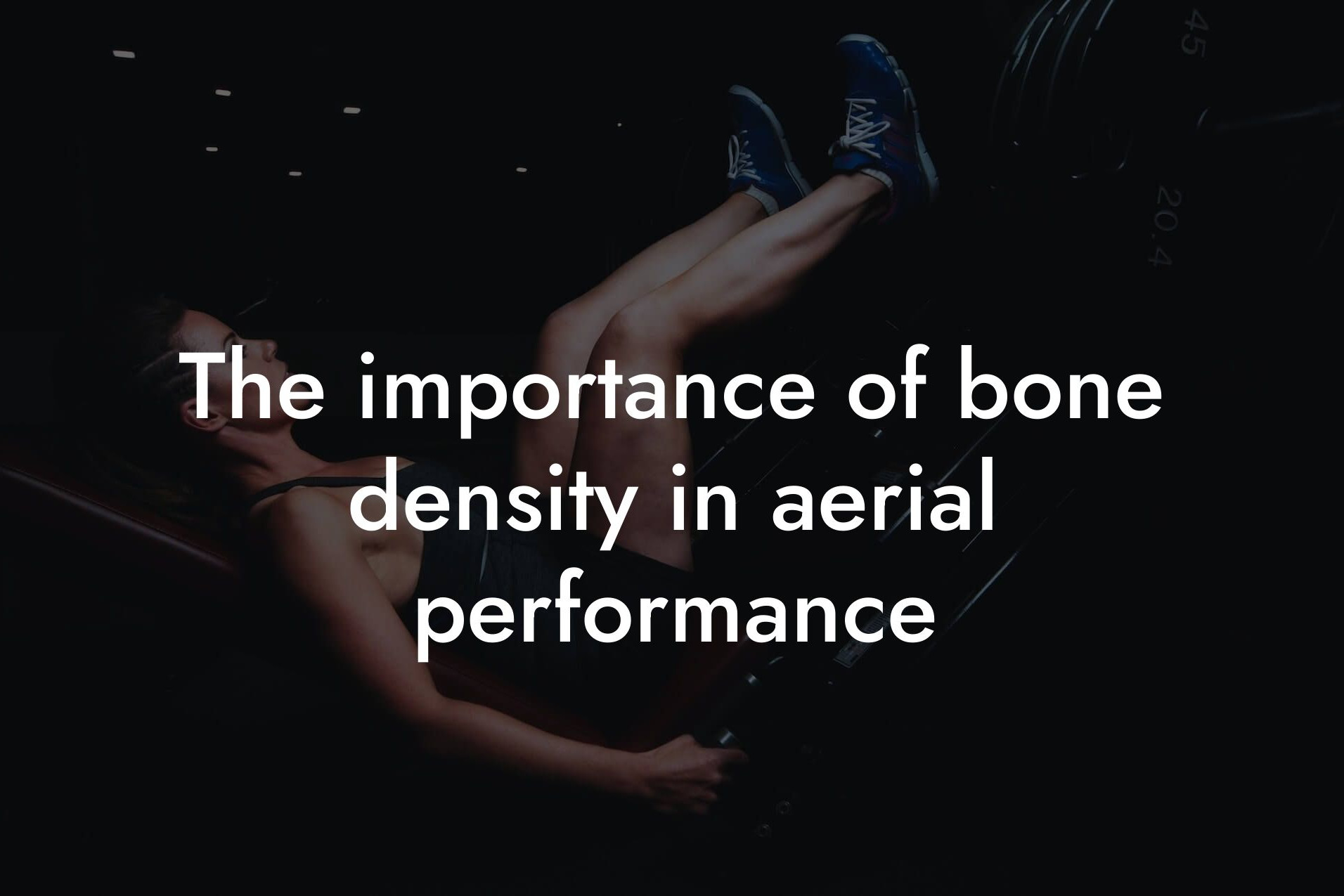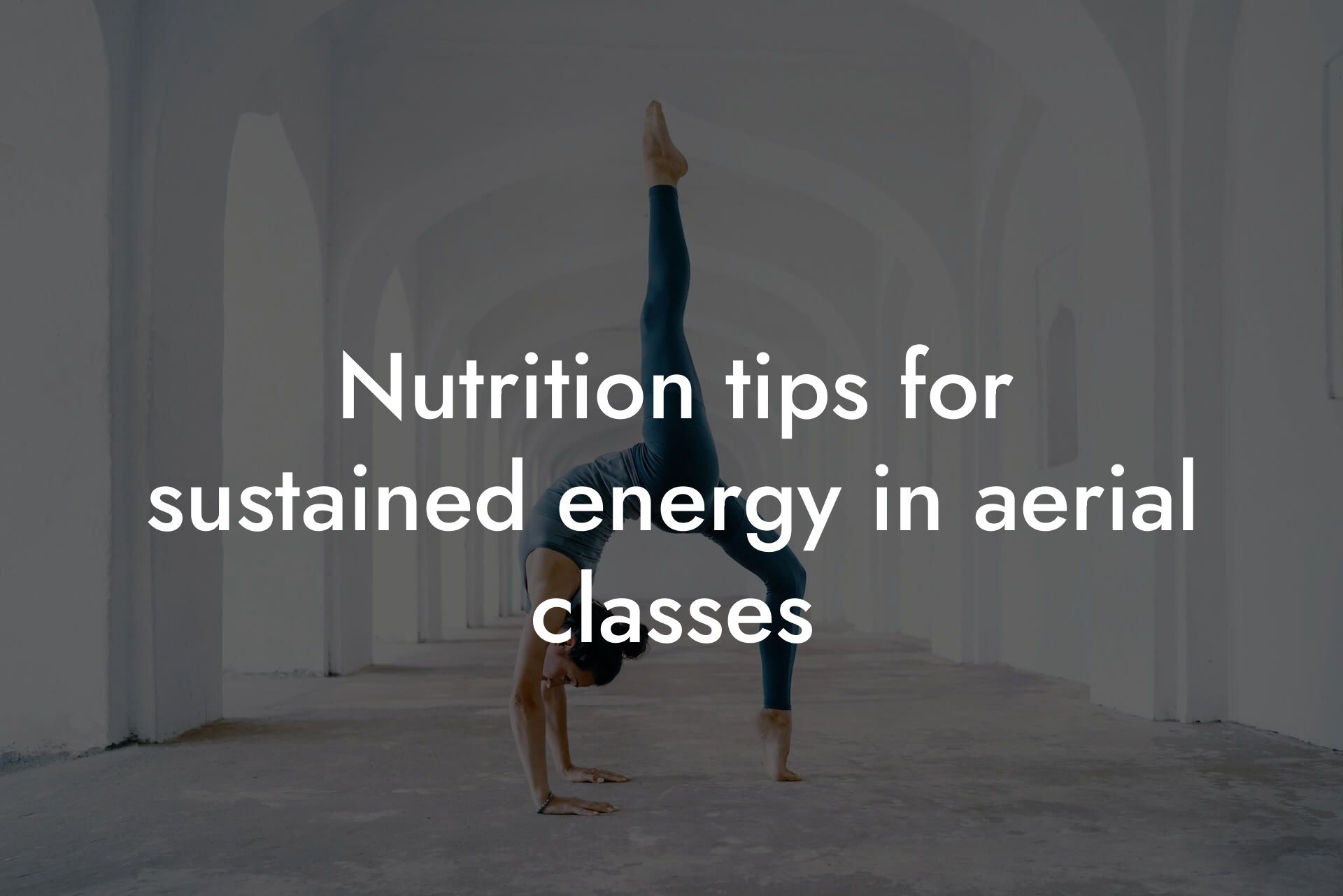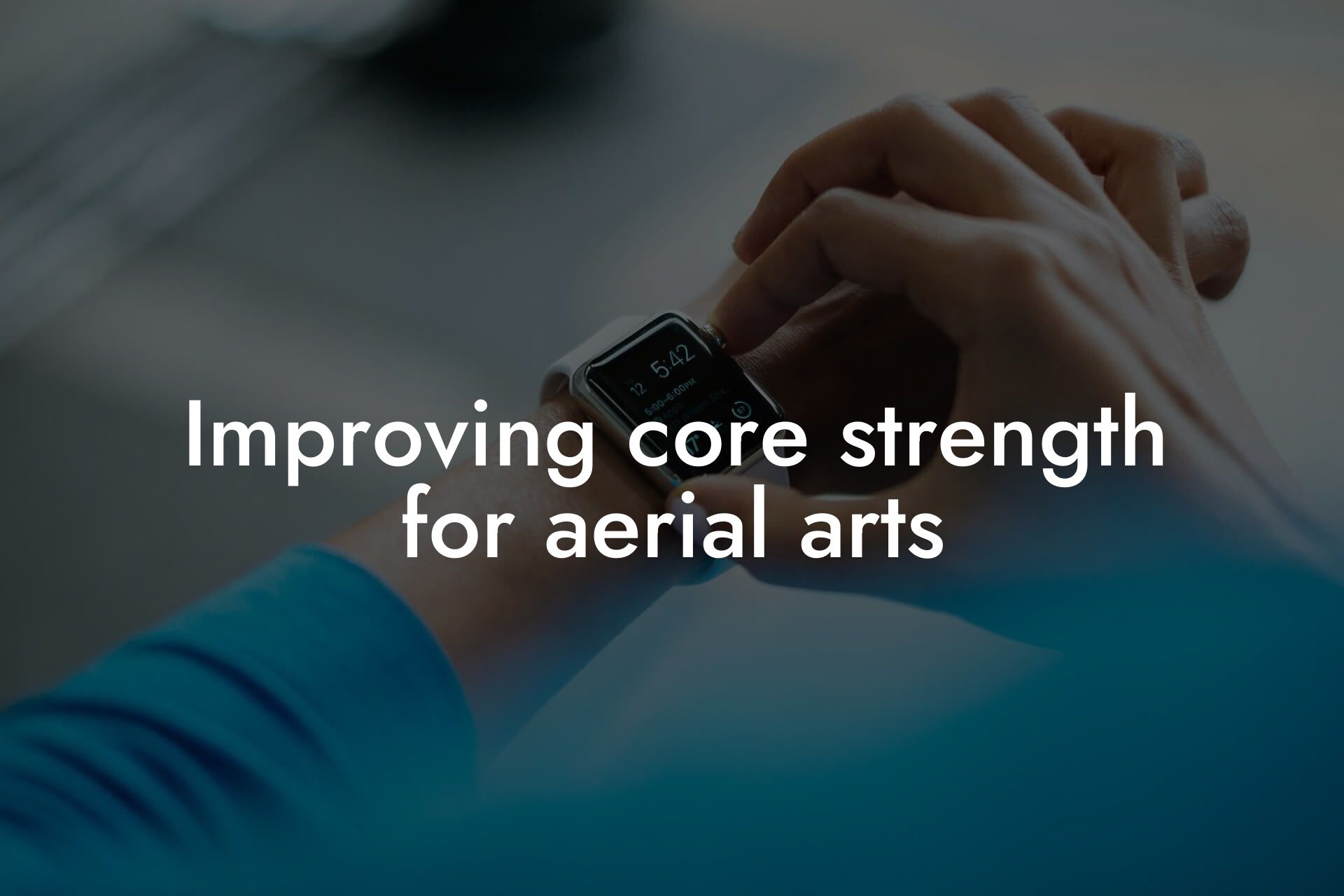Aerial fitness has become increasingly popular among fitness enthusiasts, offering a unique and challenging way to improve strength, flexibility, and overall physical fitness. However, as with any form of exercise, there is a risk of injury if proper precautions are not taken. At Tano Performance Group, we understand the importance of prioritizing safety and injury prevention, especially for high-earning professionals who rely on their physical appearance and well-being to excel in their careers. In this comprehensive guide, we will cover everything you need to know to prevent injuries in aerial fitness and ensure a safe and successful workout experience.
Table of Contents
- Understanding the Risks of Aerial Fitness
- Preparing for Aerial Fitness: A Pre-Workout Checklist
- Proper Technique and Form: The Key to Injury Prevention
- Common Mistakes to Avoid in Aerial Fitness
- The Importance of Proper Equipment Maintenance
- Staying Hydrated and Fueled for Aerial Fitness
- Injury Prevention and Management: What to Do in Case of an Injury
- Conclusion: Prioritizing Safety and Injury Prevention in Aerial Fitness
- Frequently Asked Questions
Understanding the Risks of Aerial Fitness
Aerial fitness involves performing exercises while suspended in the air using equipment such as silks, swings, or hammocks. While this form of exercise can be incredibly rewarding, it also poses unique risks and challenges. Some of the most common injuries associated with aerial fitness include:
- Muscle strains and pulls
- Joint injuries, particularly in the shoulders, elbows, and wrists
- Overuse injuries, such as tendonitis and bursitis
- Concussions and head injuries
- Skin abrasions and bruising
Preparing for Aerial Fitness: A Pre-Workout Checklist
Before starting an aerial fitness class or workout, it's essential to take certain precautions to minimize the risk of injury. Here are some key things to check off your pre-workout list:
- Warm up thoroughly: Take the time to warm up your muscles with light cardio and dynamic stretching to prevent muscle strains and improve flexibility.
- Inspect the equipment: Make sure the aerial equipment is in good condition, properly installed, and securely attached to the ceiling or anchor point.
- Choose the right attire: Wear comfortable, stretchy clothing that won't get in the way of your movements, and consider wearing grip aids or knee pads for added protection.
- Listen to your body: If you're feeling tired, sore, or experiencing any discomfort, take a rest day or modify your workout to avoid exacerbating the issue.
Proper Technique and Form: The Key to Injury Prevention
Proper technique and form are crucial in aerial fitness, as poor form can put unnecessary strain on your muscles and joints, leading to injury. Here are some key tips to keep in mind:
- Engage your core: Keep your core muscles engaged to maintain control and stability while in the air.
- Use slow and controlled movements: Avoid jerky or bouncy movements, which can cause muscle strains and joint injuries.
- Keep your shoulders down and away from your ears: This will help prevent shoulder strain and improve overall posture.
- Land safely: When descending from the air, make sure to land softly on the balls of your feet, keeping your knees bent to absorb the impact.
Common Mistakes to Avoid in Aerial Fitness
Even with proper technique and form, there are certain mistakes that can increase the risk of injury in aerial fitness. Here are some common mistakes to avoid:
- Overreaching: Don't push yourself beyond your limits, especially if you're new to aerial fitness. Start with lower heights and gradually increase as you build strength and confidence.
- Ignoring pain: If you're experiencing pain or discomfort, stop immediately and rest. Ignoring pain can lead to more severe injuries down the line.
- Failing to cool down: After your workout, take the time to cool down and stretch to prevent muscle soreness and improve recovery.
The Importance of Proper Equipment Maintenance
Proper equipment maintenance is critical in aerial fitness, as faulty or worn-out equipment can lead to serious injuries. Here are some key things to keep in mind:
- Regularly inspect equipment: Check the equipment before each use, looking for signs of wear and tear, such as frayed ropes or worn-out fabric.
- Follow manufacturer guidelines: Make sure to follow the manufacturer's guidelines for equipment maintenance, including cleaning and storage procedures.
- Replace equipment as needed: Don't hesitate to replace equipment that's no longer safe or functional.
Staying Hydrated and Fueled for Aerial Fitness
Proper hydration and nutrition are essential for optimal performance and injury prevention in aerial fitness. Here are some key tips to keep in mind:
- Drink plenty of water: Aim to drink at least 8-10 glasses of water per day, and make sure to drink water before, during, and after your workout.
- Fuel your body: Eat a balanced diet that includes plenty of protein, complex carbohydrates, and healthy fats to support muscle growth and recovery.
- Avoid heavy meals before workouts: Eat a light meal or snack 1-2 hours before your workout to prevent digestive discomfort and nausea.
Injury Prevention and Management: What to Do in Case of an Injury
Even with proper precautions, injuries can still occur. Here are some key things to keep in mind in case of an injury:
- Stop immediately: If you're experiencing pain or discomfort, stop your workout immediately and rest.
- Seek medical attention: If the injury is severe or persists, seek medical attention from a qualified healthcare professional.
- Report the incident: Inform your instructor or gym management of the incident, and provide as much detail as possible to help prevent similar injuries in the future.
Conclusion: Prioritizing Safety and Injury Prevention in Aerial Fitness
In conclusion, preventing injuries in aerial fitness requires a combination of proper technique, equipment maintenance, and common sense. By following the tips and guidelines outlined in this comprehensive guide, you can minimize the risk of injury and ensure a safe and successful workout experience. Remember, safety should always be your top priority, and with the right knowledge and precautions, you can enjoy the many benefits of aerial fitness while protecting your body and well-being.
At Tano Performance Group, we understand the importance of prioritizing safety and injury prevention, especially for high-earning professionals who rely on their physical appearance and well-being to excel in their careers. Our state-of-the-art DEXA machine provides a comprehensive body assessment, giving you the information you need to take your fitness journey to the next level. Contact us today to learn more about our services and how we can help you achieve your fitness goals while prioritizing safety and injury prevention.
Frequently Asked Questions
What are the most common injuries in aerial fitness?
Aerial fitness, like any other form of exercise, carries a risk of injury. The most common injuries in aerial fitness include shoulder strains, wrist and ankle sprains, and bruising. These injuries can occur due to poor technique, overexertion, or inadequate warm-up and cool-down routines.
How can I prevent injuries in aerial fitness?
Preventing injuries in aerial fitness requires a combination of proper technique, regular practice, and adequate preparation. It's essential to start with beginner-friendly exercises and gradually progress to more advanced moves. Warm up thoroughly before each session, and cool down afterwards to prevent muscle strain. Additionally, listen to your body and take regular breaks to avoid fatigue.
What are the benefits of aerial fitness?
Aerial fitness offers numerous benefits, including improved flexibility, increased strength, and enhanced cardiovascular health. It can also help with weight loss, improve posture, and reduce stress. Aerial fitness is a low-impact exercise, making it an excellent option for those with joint issues or chronic pain.
What is the best way to warm up for an aerial fitness session?
A proper warm-up is crucial to preventing injuries in aerial fitness. Start with light cardio exercises, such as jumping jacks or jogging in place, to get your heart rate up and loosen your muscles. Then, move on to dynamic stretching, focusing on your shoulders, arms, and legs. Finally, practice some gentle aerial movements to get comfortable with the equipment.
How can I improve my flexibility for aerial fitness?
Improving flexibility takes time and consistent practice. Incorporate stretching exercises into your daily routine, focusing on your shoulders, back, and hips. Hold each stretch for at least 30 seconds and breathe deeply, feeling the stretch in your muscles. You can also try yoga or Pilates to improve your overall flexibility.
What safety precautions should I take when practicing aerial fitness?
Safety should always be your top priority when practicing aerial fitness. Ensure that you're using high-quality equipment, and that it's properly installed and maintained. Always warm up before each session, and start with beginner-friendly exercises. Listen to your body and take regular breaks to avoid fatigue. Finally, practice with a qualified instructor or experienced partner.
Can I practice aerial fitness if I have a fear of heights?
While aerial fitness does involve heights, it's possible to overcome your fear with gradual exposure and practice. Start with low-height exercises and gradually increase the height as you become more comfortable. It's also essential to practice with a qualified instructor who can provide support and guidance.
How often should I practice aerial fitness to see results?
The frequency of your aerial fitness practice depends on your goals and current fitness level. For beginners, 2-3 times a week is a good starting point. As you progress, you can increase the frequency to 4-5 times a week. However, it's essential to allow for rest days to avoid fatigue and prevent injuries.
What should I wear to an aerial fitness class?
Wear comfortable, stretchy clothing that allows for a full range of motion. Avoid loose jewelry or accessories that could get caught in the equipment. It's also a good idea to wear grip socks or aerial shoes to provide extra traction and support.
Can I practice aerial fitness if I'm overweight or obese?
Aerial fitness is accessible to people of all shapes and sizes. However, it's essential to consult with a doctor or healthcare professional before starting any new exercise program, especially if you have any underlying health conditions. They can provide guidance on safe and effective exercises tailored to your needs.
How can I build strength for aerial fitness?
Building strength for aerial fitness requires a combination of upper body exercises, such as push-ups and pull-ups, and core exercises, such as planks and crunches. You can also incorporate resistance band exercises or weightlifting to target specific muscle groups. Focus on slow and controlled movements to build endurance and strength.
What is the difference between aerial yoga and aerial Pilates?
Aerial yoga and aerial Pilates are both forms of aerial fitness that incorporate elements of yoga and Pilates, respectively. Aerial yoga focuses on flowing movements, breathwork, and meditation, while aerial Pilates emphasizes core strength, control, and precision. Both practices can help improve flexibility, strength, and overall physical fitness.
Can I practice aerial fitness if I have a pre-existing injury?
If you have a pre-existing injury, it's essential to consult with a doctor or healthcare professional before starting an aerial fitness program. They can provide guidance on safe and effective exercises tailored to your needs and abilities. Additionally, work with a qualified instructor who can modify exercises to accommodate your injury.
How can I prevent overexertion in aerial fitness?
Preventing overexertion in aerial fitness requires listening to your body and taking regular breaks. Start with beginner-friendly exercises and gradually increase the intensity and duration as you become more comfortable. If you experience any pain or discomfort, stop immediately and rest.
What are the benefits of private aerial fitness lessons?
Private aerial fitness lessons offer personalized attention and instruction, allowing you to progress at your own pace and focus on specific areas of improvement. You'll receive tailored feedback and guidance, helping you to improve your technique and achieve your fitness goals more efficiently.
Can I practice aerial fitness at home?
While it's possible to practice aerial fitness at home, it's essential to ensure that you have the necessary equipment and expertise. Invest in high-quality equipment, and work with a qualified instructor or online program to guide you through proper techniques and safety precautions.
How can I stay motivated in my aerial fitness journey?
Staying motivated in your aerial fitness journey requires setting realistic goals, tracking your progress, and celebrating your achievements. Find a workout buddy or join a community of like-minded individuals to provide support and accountability. Reward yourself for milestones reached, and don't be too hard on yourself if you encounter setbacks.
What are the benefits of group aerial fitness classes?
Group aerial fitness classes offer a fun and social atmosphere, providing motivation and accountability. You'll learn from others, make new friends, and stay engaged and motivated. Group classes also provide an opportunity to learn from different instructors and experience new exercises and techniques.
Can I practice aerial fitness during pregnancy?
While aerial fitness can be a great way to stay active during pregnancy, it's essential to consult with a doctor or healthcare professional before starting or continuing an aerial fitness program. They can provide guidance on safe and effective exercises tailored to your needs and abilities.
How can I improve my aerial fitness technique?
Improving your aerial fitness technique requires practice, patience, and dedication. Focus on proper form and alignment, and engage your core muscles to maintain control and stability. Practice regularly, and work with a qualified instructor to receive feedback and guidance.
What are the benefits of aerial fitness for bone density?
Aerial fitness can help improve bone density by providing a low-impact, weight-bearing exercise that targets specific muscle groups. Regular practice can help increase bone density, reducing the risk of osteoporosis and fractures.
Can I practice aerial fitness with a partner or friend?
Practicing aerial fitness with a partner or friend can be a fun and motivating way to stay active. You can provide support and encouragement, and learn from each other's strengths and weaknesses. Just ensure that you're both working at a similar level and pace to avoid injury or frustration.
Here are some related articles you might love...
- The importance of bone density in aerial performance
- Nutrition tips for sustained energy in aerial classes
- Improving core strength for aerial arts
- Strength training tips specific to aerial fitness
- How body composition affects performance in aerial fitness
- Maintaining muscle recovery with aerial training
- Reducing body fat for improved strength-to-weight ratio in aerial arts
- Using DEXA scans to monitor progress in aerial fitness
- Balancing strength and flexibility in aerial fitness
Zak Faulkner
Zak Faulkner is a leading authority in the realm of physical health and body composition analysis, with over 15 years of experience helping professionals optimise their fitness and well-being. As one the experts behind Tano Performance Group, Zak has dedicated his career to providing in-depth, science-backed insights that empower clients to elevate their physical performance and overall health.
With extensive knowledge of DEXA technology, Zak specializes in delivering comprehensive body assessments that offer precise data on body fat, muscle mass, bone density, and overall physique. His expertise enables individuals to make informed decisions and achieve their fitness goals with accuracy and confidence. Zak’s approach is rooted in a deep understanding of human physiology, combined with a passion for helping clients unlock their full potential through personalised strategies.
Over the years, Zak has earned a reputation for his commitment to excellence, precision, and client-focused service. His guidance is trusted by top professionals who demand the best when it comes to their health. Whether advising on fitness programs, nutritional strategies, or long-term wellness plans, Zak Faulkner’s insights are a valuable resource for anyone serious about taking their health and fitness to the next level.
At Tano Performance Group, Zak continues to lead our Content Team revolutionising how professionals approach their physical health, offering unparalleled expertise that drives real results.




